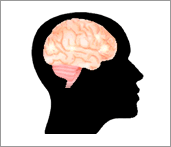Have you been declined for life insurance or asked to pay a higher rate due to epilepsy?
How will epilepsy affect your ability to purchase life insurance?
- Epilepsy and Seizure Disorders Defined
- Risk Factors of Epilepsy
- The Impact of Epilepsy or Seizure Disorders on Life Insurance Rates
- How Can MEG Financial Help
- Related Links for Epilepsy

It is a condition that insurance companies will carefully consider in determining the rate you pay for life insurance since the diagnosis of epilepsy covers a broad spectrum of symptoms with varying degrees of severity. Read on to learn more about Epilepsy and Seizure Disorders and what you can expect as you apply for life insurance.
Other related medical conditions (or medical terminology) include Neurological Disorders, Petite Mal Seizures, Grand Mal Seizures, Epileptic, Attacks, Treatment. Read below for more information on receiving a life insurance quote from a life insurance specialist with these medical conditions.
Understanding Epilepsy and Seizure Disorders
Epilepsy is not classified as a disease. It is referred to as a syndrome of multiple and often unknown causes or as a chronic neurological disorder. The condition typically presents itself with the onset of a seizure or epileptic attack. These seizures are caused by chaotic electrical discharges in parts of, or throughout, the brain. These unregulated brainwaves affect a person’s consciousness to varying degrees and are broken down into four categories:
- Grand Mal: An individual experiencing a grand mal seizure often notices an unusual sensation or “strange feeling” prior to the attack. This feeling, or premonition before the attack, is known as an “aura.” During a grand mal attack the entire brain is overcome with abnormal electrical energy and causes total unconsciousness, physically forcing the person to fall and convulse with uncontrolled muscle twitching. The seizure can last up to several minutes. A period of deep sleep often follows an attack. Grand mal seizures are erratic and can occur once or many times over the course of a person’s lifetime.
- Petite Mal: A person experiencing a petite mal seizure does not typically collapse nor convulse. Often undetectable to the untrained eye, the person appears to disconnect with the outside world for a period of several seconds to a half-minute as if daydreaming. Medical personnel observing a petite mal may notice a loss of muscle tone during this type of attack. This type of seizure commonly occurs in individuals under the age of twenty, last only seconds and can happen several times in the course of a day.
- Partial Seizure – Simple: The onset of a partial seizure labeled “simple” usually affects an individual’s motor, sensory or psychic involvement and although it may not render a person unconscious it can cause a sensation of confusion. This type of seizure occurs from a single focus of the cerebral cortex of the brain.
- Partial Seizure – Complex: Like the “simple” partial seizure, a “complex” partial seizure generates from a single focus of the cerebral cortex of the brain. It differs in that the person suffers a loss of consciousness and several parts of the body may be involved.
The Impact of Epilepsy and Seizure Disorders on Life Insurance Rates
Decoding the mysteries of epilepsy is challenging for medical professionals and insurance underwriters as well. The first step physicians and insurers take toward helping an epileptic is to rule out a serious underlying medical condition, such as brain tumor, as the cause of a person’s seizures. Next the focus turns to managing the frequency and severity of the seizures so that individuals can resume their activities of daily living. Insurers examine a person’s ability to function at home and work with reduced risk of seizure-induced accidents. Adults, age 16 and older, need to provide insurers with documentation verifying the frequency and severity of their seizures. This history should note if and when medical assistance or hospitalization was required.
Individuals who are licensed to drive, who demonstrate that they are following the directions of their physicians to manage their epilepsy by taking recommended medications and who refrain from behaviors or occupations that puts them at higher risk for accidents will have the most favorable insurance rate outcome. Epileptics whose seizure activity is not under control, who are unable to work or who cannot obtain a driver’s license will face a more difficult challenge getting insurance.

 Speak with an experienced advisor!
Speak with an experienced advisor! 


